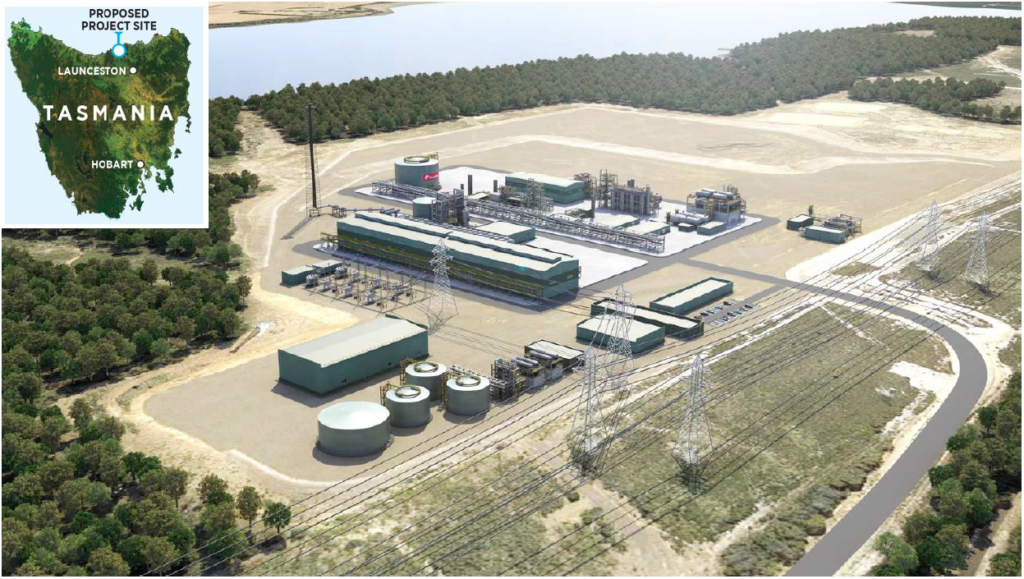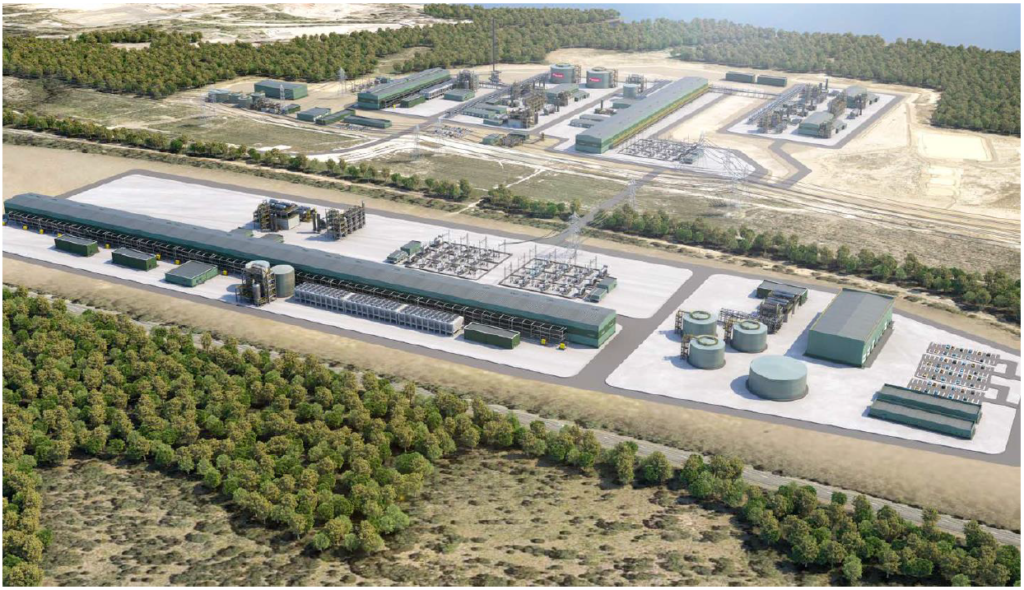Woodside outlines scale for green ammonia project in Tasmania
By Julian Atchison on November 16, 2021
H2TAS

Woodside Energy secured land this week for its H2TAS project in Bell Bay, Tasmania (click to download pdf). Woodside and Austrak Business Parks have agreed to a long-term lease on a partially-cleared project site nearby the Bell Bay Advanced Manufacturing Zone, which will be located adjacent to maritime export facilities.
The production capacity & energy source for the project were also outlined in the announcement:
H2TAS is a phased development with the potential to support up to 1.7 gigawatts (GW) of electrolysis for hydrogen and ammonia production. The initial phase would have capacity of up to 300 megawatts (MW) and target production of 200,000 tonnes per annum (tpa) of ammonia, matched to forecast customer demand.
H2TAS would use a combination of hydropower and wind power to create a 100% renewable ammonia product for export as well as renewable hydrogen for domestic use.
Woodside is targeting a final investment decision in 2023, with construction and commissioning expected to take approximately 24 months.
Woodside official press release, 12 Nov 2021
Bell Bay ammonia

The Bell Bay Advanced Manufacturing Zone will be the home of Fortescue’s similarly-sized green hydrogen & ammonia project (200 MW initial phase). The exact location of Origin Energy’s green ammonia production plant (500 MW initial phase) has yet to be revealed, but results from a feasibility study are due next month.
There are also a number of partnerships between Australian, Korean and Japanese organisations exploring the feasibility of ammonia export from Bell Bay to Asia, including agreements between:
- Origin Energy and Korean steel make POSCO (April),
- Fortescue Metals Group and IHI Corporation in Japan (May),
- Woodside, JOGMEC, Marubeni and two Japanese power utilities (July),
- and J-POWER and Origin Energy (October).
H2Perth (Kwinana, Western Australia)
Last month Woodside also announced the H2Perth project: a world-scale, 1,500 tonnes per day hydrogen production facility aimed at local markets for refueling fuel cell vehicles, and international markets via export in the form of liquefied hydrogen or ammonia.
Hydrogen and ammonia from H2Perth would be produced using both electrolysis technologies and natural gas reforming, with 100% of carbon emissions abated or offset. The electrolysis component of H2Perth’s production will have an initial capacity of 250 megawatts, with potential to scale to more than 3 gigawatts (GW) alongside both customer demand and renewable energy growth. The initial phase of the steam methane reformer will consume 40 terajoules per day of natural gas.
Woodside official press release, 25 Oct 2021
At 3 GW full capacity, H2Perth would also play a crucial role in stabilising Western Australia’s electricity grid:
H2Perth is anticipated to eventually operate electrolysers with a total capacity of more than 3GW. The current registered power generation capacity of Western Australia’s entire South West Interconnected System is 5.8GW. Kwinana is a vital node in the Western Australian electricity network. The hydrogen electrolysers can help stabilise this network because they can be operated flexibly (by being switched on and off quickly). This can help the network support more intermittent renewable power, such as residential rooftop PV and large-scale renewable generation, as the State transitions to greener electricity.
Woodside official press release, 25 Oct 2021